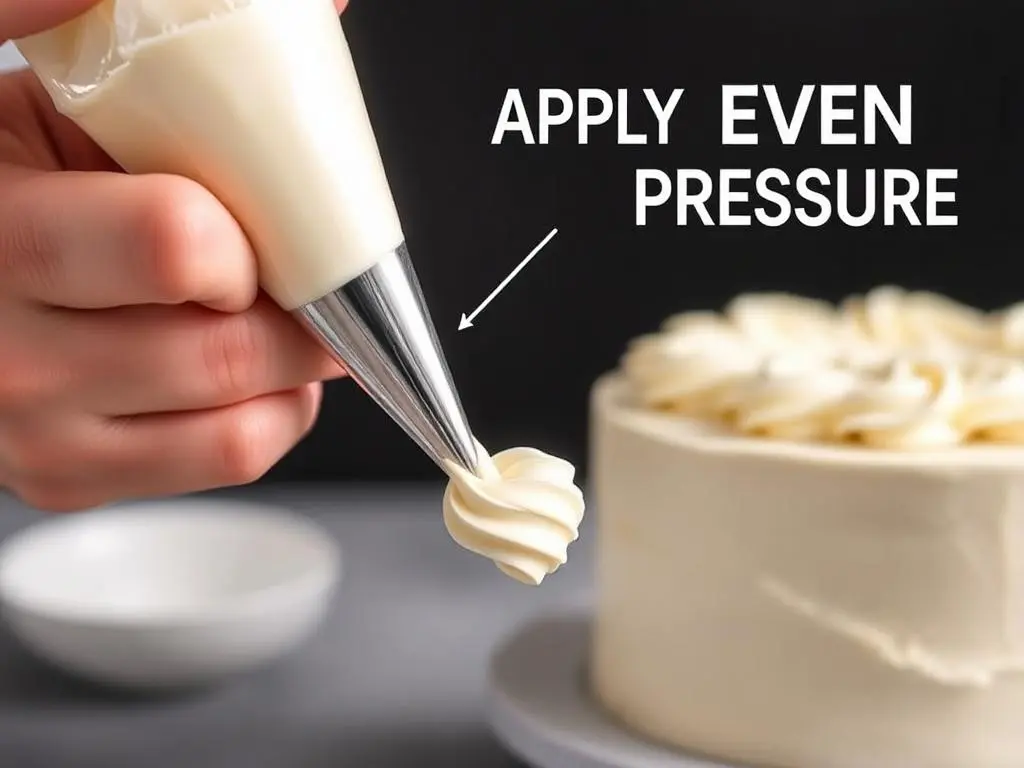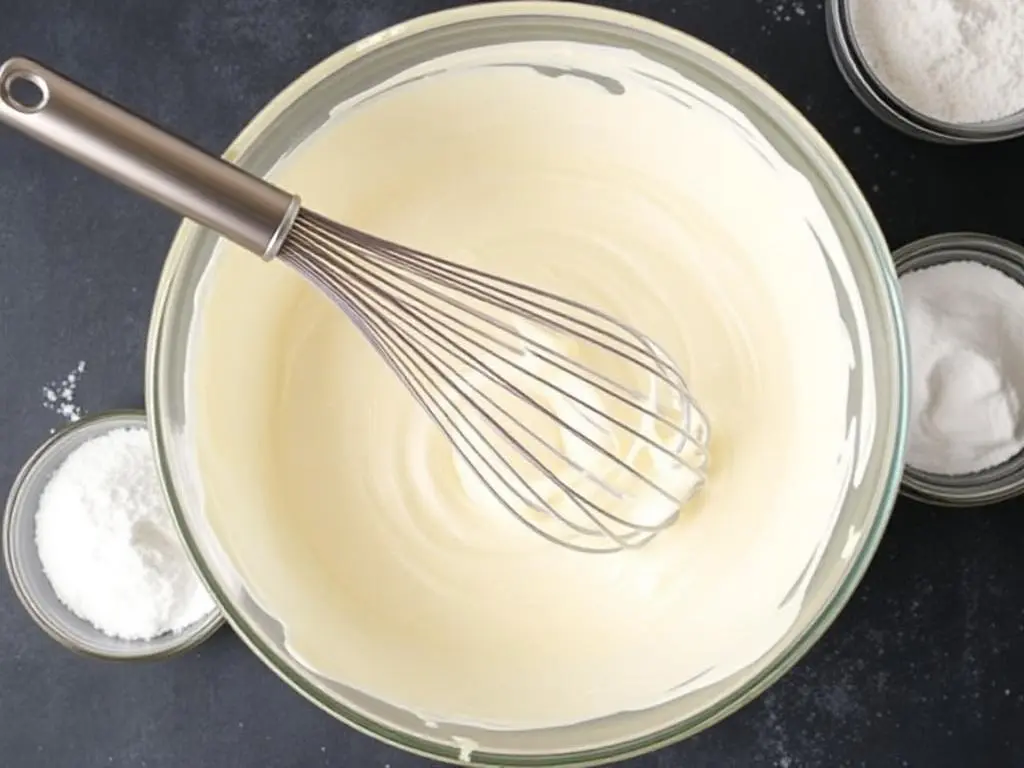When it comes to baking, few things are as delightful as a beautifully frosted cake. One of the most popular choices for frosting is cream cheese frosting. Its rich, tangy flavor pairs perfectly with a variety of desserts, from carrot cake to red velvet. However, if you’ve ever tried to pipe this luscious frosting, you might have encountered a common issue: it’s too runny! Fear not, because in this article, we’ll explore how to thicken cream cheese frosting for piping, ensuring your creations look as good as they taste.
Let’s dive into the world of frosting thickness and discover the best techniques to achieve that perfect consistency!
Introduction to Cream Cheese Frosting
Overview of Cream Cheese Frosting
Cream cheese frosting is a delightful blend of cream cheese, butter, and powdered sugar, often enhanced with vanilla or other flavorings. This frosting is beloved for its creamy texture and slightly tangy taste, making it a favorite for many bakers. However, achieving the right consistency can be tricky, especially when you want to pipe it onto cakes or cupcakes.
Importance of Thickness for Piping
When it comes to piping, the thickness of your frosting is crucial. A frosting that’s too thin can lead to a messy application, causing it to run off the edges of your cake or lose its shape entirely. On the other hand, a perfectly thickened cream cheese frosting holds its shape beautifully, allowing you to create stunning designs and decorations.
Purpose of the Article
In this article, we’ll guide you through various methods to thicken cream cheese frosting for piping. Whether you’re a seasoned baker or just starting, these tips and tricks will help you achieve the ideal consistency for all your frosting needs. So, let’s get started on this sweet journey to frosting perfection!
Understanding Cream Cheese Frosting
What is Cream Cheese Frosting?
Cream cheese frosting is a popular choice among bakers for its unique flavor and creamy texture. Made primarily from cream cheese, butter, and powdered sugar, this frosting is often used to top cakes, cupcakes, and cookies. The cream cheese adds a delightful tanginess that balances the sweetness of the sugar, making it a perfect complement to many desserts.
Common Uses of Cream Cheese Frosting
You’ll find cream cheese frosting in a variety of baked goods. It’s especially famous for pairing with carrot cake, red velvet cake, and even pumpkin-flavored treats. Additionally, it can be used as a filling for cookies or as a dip for fruit. The versatility of this frosting makes it a staple in many kitchens, but its consistency can sometimes pose a challenge, especially when it comes to piping.
Factors Affecting the Consistency of Cream Cheese Frosting
Several factors can influence the thickness of your cream cheese frosting. The temperature of your ingredients plays a significant role; for instance, if your cream cheese and butter are too warm, the frosting may become too runny. Additionally, the ratio of cream cheese to powdered sugar can affect the overall consistency. If you’re using a recipe that calls for more cream cheese than sugar, you might end up with a thinner frosting. Understanding these factors is essential for achieving the perfect piping consistency.
Why Thicken Cream Cheese Frosting?
The Role of Thickness in Piping
When it comes to piping, the thickness of your cream cheese frosting is everything. A thicker frosting holds its shape better, allowing you to create beautiful swirls, rosettes, and intricate designs. If your frosting is too runny, it can lead to a frustrating experience where your hard work goes to waste. Instead of achieving those stunning decorations, you might end up with a puddle of frosting that doesn’t resemble your vision at all!
Common Problems with Thin Frosting
Thin frosting can cause several issues. For starters, it may not adhere well to the cake, leading to a messy appearance. Additionally, if you try to pipe thin frosting, it can easily collapse or lose its shape, resulting in a less-than-appealing finish. You might also find that it drips off the sides of your cake, creating a less polished look. These problems can be disheartening, especially when you’ve put in the effort to bake a beautiful cake.
Benefits of Thickened Frosting
Thickening your cream cheese frosting not only enhances its appearance but also improves its stability. A well-thickened frosting can withstand warmer temperatures, making it ideal for outdoor events or summer celebrations. Plus, it allows for more creativity in your decorating. You can experiment with different piping techniques, knowing that your frosting will hold its shape. Ultimately, thickening your frosting elevates your baking game, ensuring that your desserts look as good as they taste.
Techniques to Thicken Cream Cheese Frosting
When it comes to achieving the perfect consistency for cream cheese frosting, there are several effective techniques you can use. Each method has its own benefits, and you can choose the one that best suits your needs. Let’s dive into these tried-and-true methods for thickening your frosting!
Adding Powdered Sugar
How Much to Add
One of the simplest ways to thicken cream cheese frosting is by adding more powdered sugar. This method not only increases the thickness but also enhances the sweetness. Start by adding a small amount—about 1/4 cup at a time—and mix thoroughly. You can continue adding until you reach your desired consistency. Just be cautious not to overdo it, as too much sugar can make your frosting overly sweet.
Tips for Incorporation
To ensure a smooth texture, sift the powdered sugar before adding it to your frosting. This helps prevent lumps and makes it easier to incorporate. Mix on low speed initially to avoid a sugar cloud, then gradually increase the speed until the frosting is well combined and thickened.
Using Cornstarch
How to Use Cornstarch
Another effective method for thickening cream cheese frosting is to incorporate cornstarch. Start with about 1 tablespoon of cornstarch for every cup of frosting. Mix it in gradually, ensuring it’s well combined. Cornstarch acts as a thickening agent and can help stabilize your frosting without altering the flavor significantly.
Pros and Cons
While cornstarch is a great option, it’s essential to note that it can slightly change the texture of your frosting. If you use too much, it may create a grainy feel. Therefore, it’s best to use it sparingly and adjust as needed.
Incorporating Heavy Cream

The Right Amount
Adding heavy cream can also help thicken your cream cheese frosting. While it may seem counterintuitive, the key is to whip the heavy cream separately until it forms stiff peaks, then fold it into your frosting. Start with about 1/4 cup of heavy cream for every 8 ounces of cream cheese. This method not only thickens the frosting but also adds a light, airy texture.
Whipping Techniques
When whipping the heavy cream, make sure to use a chilled bowl and beaters for the best results. This helps the cream whip up faster and achieve the desired stiffness. Once you’ve folded the whipped cream into your frosting, be gentle to maintain that airy texture.
Chilling the Frosting
Why Chilling Works
Sometimes, all your frosting needs is a little time in the fridge. Chilling cream cheese frosting can help it firm up, making it easier to pipe. The cold temperature solidifies the fats in the cream cheese and butter, resulting in a thicker consistency.
How Long to Chill
To chill your frosting, simply cover it with plastic wrap and place it in the refrigerator for about 30 minutes to an hour. After chilling, give it a good stir before using it for piping. You’ll be amazed at how much thicker it becomes!
Adding Cream Cheese
When to Add More Cream Cheese
If your frosting is still too thin after trying the above methods, consider adding more cream cheese. This will not only thicken the frosting but also enhance its flavor. Just be mindful of the balance; you don’t want to overpower the sweetness.
Balancing Flavors
When adding more cream cheese, you may need to adjust the amount of powdered sugar to maintain the right sweetness. Start with a small amount of cream cheese, mix it in, and taste as you go to find that perfect balance.
Using Gelatin
How to Prepare Gelatin
For a more stable option, you can use gelatin to thicken your cream cheese frosting. Start by blooming unflavored gelatin in cold water according to the package instructions. Once it’s bloomed, gently heat it until it dissolves completely.
Incorporating Gelatin into Frosting
Allow the gelatin to cool slightly before mixing it into your frosting. This method provides excellent stability, especially in warmer conditions, making it ideal for outdoor events. Just be sure to mix it in thoroughly to avoid any lumps.
Tips for Perfect Piping

Now that you know how to thicken your cream cheese frosting, it’s time to focus on the art of piping. Piping can elevate your baked goods from ordinary to extraordinary, and with the right techniques, you can create beautiful designs that impress everyone. Here are some essential tips to help you achieve perfect piping results!
Choosing the Right Piping Tip
The type of piping tip you choose can make a significant difference in the outcome of your frosting designs. There are various piping tips available, each designed for specific effects. For instance, a star tip creates beautiful rosettes, while a round tip is perfect for writing or outlining. If you’re looking to create intricate designs, consider using a petal tip or a leaf tip. Experimenting with different tips can help you discover new techniques and styles.
Piping Techniques for Best Results
Once you’ve selected your piping tip, it’s time to master the techniques. Here are a few essential tips to keep in mind:
- Hold the Piping Bag Correctly: Grip the piping bag firmly but not too tightly. Hold it at a 45-degree angle to the surface you’re decorating. This angle allows for better control and even pressure.
- Apply Even Pressure: As you pipe, apply consistent pressure to the bag. This ensures that your frosting flows smoothly and evenly. If you find yourself squeezing too hard, take a moment to relax your grip.
- Practice Makes Perfect: If you’re new to piping, practice on a piece of parchment paper before decorating your cake. This allows you to get a feel for the pressure and movement without the pressure of decorating a finished product.
Common Mistakes to Avoid
Even experienced bakers can make mistakes when piping. Here are some common pitfalls to watch out for:
- Overfilling the Piping Bag: Filling your piping bag too full can make it difficult to control. Instead, fill it about halfway, allowing for better maneuverability.
- Not Using Enough Frosting: If your frosting is too thin or you don’t have enough in the bag, it can lead to inconsistent piping. Make sure you have enough frosting to complete your design.
- Rushing the Process: Piping takes practice and patience. Don’t rush through it; take your time to create the designs you envision. If you make a mistake, don’t be afraid to scrape it off and start again.
For more tips and tricks to perfect your cream cheese frosting, you might find our article on how to make cream cheese filling thicker helpful. If you’re exploring other uses for cream cheese in desserts, check out our detailed guide on cream cheese filling. Not sure whether buttercream or cream cheese frosting is best for your creation? Dive into our comparison of buttercream vs. cream cheese filling to make the perfect choice for your baked masterpiece!
Conclusion
In this article, we’ve explored the ins and outs of thickening cream cheese frosting for piping. We started by understanding what cream cheese frosting is and why its thickness is crucial for achieving beautiful designs. We then delved into various techniques to thicken your frosting, including adding powdered sugar, using cornstarch, incorporating heavy cream, chilling the frosting, adding more cream cheese, and even using gelatin for stability.
Baking is all about creativity and experimentation. Don’t hesitate to try out different methods to find what works best for you. Each technique can yield slightly different results, so feel free to mix and match until you discover your perfect frosting consistency. Remember, practice makes perfect, and the more you pipe, the more confident you’ll become in your skills.
Whether you’re decorating a birthday cake, a holiday dessert, or just indulging in a sweet treat, cream cheese frosting can elevate your baked goods to new heights. With the right techniques and a little patience, you can achieve stunning results that will impress your family and friends. So grab your piping bag, thicken that frosting, and let your creativity shine!
Thank you for joining us on this sweet journey to mastering cream cheese frosting. Happy baking!
FAQs
As you embark on your journey to thicken cream cheese frosting for piping, you may have some questions. Here are some frequently asked questions that can help clarify common concerns and provide additional insights into working with this delicious frosting.
1. Can I use regular cream cheese instead of whipped cream cheese?
Absolutely! You can use regular cream cheese for your frosting. However, keep in mind that regular cream cheese is denser and may require more powdered sugar to achieve the desired thickness. If you prefer a lighter texture, you can whip the regular cream cheese before mixing it with the other ingredients. This will help incorporate air and create a fluffier frosting.
2. How do I fix runny cream cheese frosting?
If you find that your cream cheese frosting is too runny, don’t panic! You can easily fix it by adding more powdered sugar or cornstarch, as discussed earlier. Start with small increments and mix thoroughly until you reach the desired consistency. If you’ve already added a lot of sugar and it’s still too thin, consider chilling the frosting for about 30 minutes to help it firm up.
3. Can I make cream cheese frosting ahead of time?
Yes, you can make cream cheese frosting ahead of time! In fact, it often tastes even better after sitting for a while, as the flavors meld together. Store the frosting in an airtight container in the refrigerator for up to a week. When you’re ready to use it, simply take it out, let it come to room temperature, and give it a good stir to restore its texture.
4. What can I do if my frosting is too thick?
If your frosting turns out too thick, don’t worry! You can easily thin it out by adding a small amount of heavy cream or milk. Start with just a teaspoon at a time, mixing well after each addition until you achieve the desired consistency. Be careful not to add too much liquid at once, as it can quickly turn your frosting runny.
5. How long can I store cream cheese frosting?
Cream cheese frosting can be stored in the refrigerator for up to one week. If you want to keep it longer, consider freezing it. Place the frosting in an airtight container or a freezer-safe bag, and it can last for up to three months. When you’re ready to use it, thaw it in the refrigerator overnight and give it a good stir before piping.

